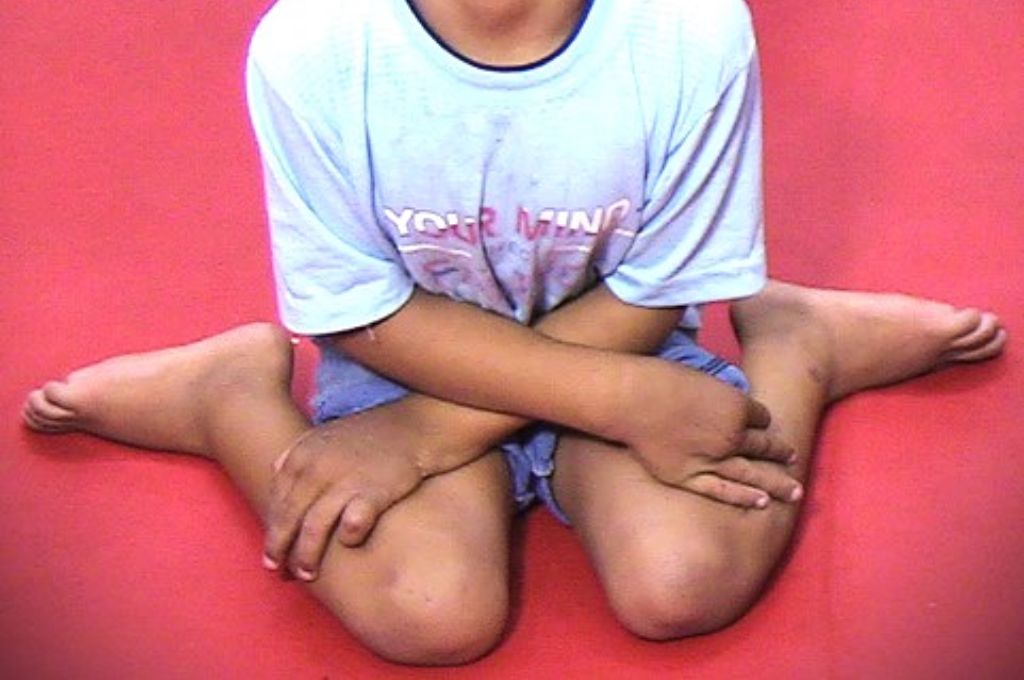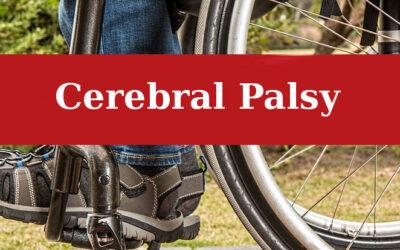What is Atonic Cerebral Palsy?

Atonic cerebral palsy, nestled within the spectrum of cerebral palsy, is distinguished by hypotonia or low muscle tone, leading to challenges in precisely regulating movements. The condition stems from damage to the developing brain, occurring in critical phases before, during, or shortly after birth. It is also known as hypotonic cerebral palsy. In recent literature, this term has been removed because most hypotonic cerebral palsy is caused by genetic brain or neuromuscular disorder and does not fulfill the criteria for making the diagnosis of cerebral palsy. Remains converted in dyskinetic cerebral palsy as age progresses.
Causes of Atonic Cerebral Palsy
Atonic cerebral palsy arises from a complex interplay of factors affecting the developing brain. Understanding these causes is crucial for a comprehensive grasp of the condition. It is very difficult to identify the etiology of hypotonic cerebral palsy. Because most of them have some genetic issues. Let’s delve deeper into the multifaceted causes:
Prenatal Factors:
Infections during Pregnancy:
Certain infections contracted by the mother during pregnancy, such as rubella, cytomegalovirus (CMV), or toxoplasmosis, can significantly increase the risk of atonic cerebral palsy.
Genetic Factors:
Genetic predispositions may contribute to abnormal brain development, increasing the likelihood of atonic cerebral palsy. Specific gene mutations or chromosomal abnormalities can play a role. Now, it is the leading cause of hypotonic variety of cerebral palsy.
Brain Development Abnormalities:
Anomalies in the formation of the fetal brain, occurring during the early stages of pregnancy, can lead to atonic cerebral palsy. Factors disrupting the intricate processes of neuronal migration and connectivity may contribute. It also happens because of multiple reasons like genetic diseases, drug intake during pregnancy, etc.
Perinatal Factors:
Complications during Labor and Delivery:
Oxygen deprivation (asphyxia) during labor and delivery is a critical perinatal factor. Issues such as umbilical cord problems, placental complications, or prolonged labor can compromise the oxygen supply to the developing brain. Hypoglycemia during birth is also a very common cause of hypotonic cerebral palsy.
Premature Birth:
Babies born prematurely are at an increased risk of cerebral palsy, including the atonic subtype. The underdeveloped brain may be more susceptible to damage.
Multiple Births:
Twins, triplets, or higher-order multiple births are associated with an elevated risk of cerebral palsy. The challenges of multiple pregnancies can contribute to complications during delivery.
Postnatal Factors:
Infections and Illnesses:
Infections or illnesses affecting the brain during infancy or early childhood can contribute to developing atonic cerebral palsy. Meningitis or encephalitis are examples of conditions that may lead to brain damage. Hyperbilirubinemia is the common cause of hypotonic cerebral palsy that can convert into dyskinetic cerebral palsy.
Head Injuries:
Traumatic head injuries during the early years of life can result in damage to the brain, leading to atonic cerebral palsy. Falls, accidents, or physical abuse are potential causes.
Stroke or Vascular Issues:
Disruption of blood supply to the brain, whether due to stroke or vascular abnormalities, can result in damage to specific brain regions, contributing to atonic cerebral palsy. Among all these causes, genetic, hypoglycemia, and hyperbilirubinemia in newborns is the leading cause of hypotonic cerebral palsy in the world. Understanding these causes underscores the importance of a comprehensive prevention and early intervention approach. Prenatal care, monitoring for infections, addressing genetic risks, and careful management during labor and delivery are crucial in minimizing the risk of atonic cerebral palsy. Moreover, prompt attention to postnatal factors such as infections or head injuries is vital for preventing or minimizing the impact of these potential causes. Early identification and intervention can significantly improve outcomes for individuals affected by atonic cerebral palsy.
Signs and Symptoms
Atonic cerebral palsy manifests through a range of distinctive signs and symptoms, reflecting the impact of low muscle tone and impaired motor control. Understanding these manifestations is crucial for early identification and targeted intervention. Let’s delve into the intricate details of the signs and symptoms associated with atonic cerebral palsy:
Low Muscle Tone:
Hypotonia:
A hallmark characteristic of atonic cerebral palsy is hypotonia or low muscle tone. This results in pervasive weakness and floppiness in the muscles, impacting the ability to maintain posture and execute controlled movements.
Poor Muscle Strength:
The diminished muscle tone contributes to reduced muscle strength, making tasks requiring force or sustained effort challenging for individuals with atonic cerebral palsy.
Motor Coordination and Control:
Poor Coordination:
Difficulties in coordinating movements characterize atonic cerebral palsy. Individuals may struggle with precise control of their limbs, affecting activities such as reaching for objects or manipulating items.
Delayed Motor Milestones:
Atonic cerebral palsy often leads to delays in achieving crucial developmental milestones. This can include sitting, crawling, standing, and walking delays, reflecting the impact on gross motor skills.
Balance and Posture:
Balance Issues:
Maintaining balance is a significant challenge for individuals with atonic cerebral palsy. The weakness in the muscles and the lack of proper coordination contribute to an increased risk of falls and difficulties in navigating uneven terrain.
Postural Instability:
Impaired muscle tone affects posture, leading to difficulty maintaining an upright and stable position. Individuals may tend to slouch or experience challenges in sitting or standing for extended periods.
Speech and Fine Motor Skills:
Speech Impairments:
Atonic cerebral palsy can impact the muscles involved in speech production, leading to speech difficulties. This may manifest as slurred speech, difficulty articulating words, or difficulty coordinating the necessary facial and oral movements.
Fine Motor Challenges:
Delicate tasks requiring precise control of small muscles, such as writing or buttoning a shirt, can be challenging for individuals with atonic cerebral palsy due to impaired fine motor skills.
Joint and Skeletal Issues:
Joint Instability:
The reduced muscle tone may contribute to joint instability, potentially leading to joint dislocations or subluxations.
Skeletal Deformities:
Prolonged muscle weakness and imbalance can result in skeletal deformities, such as scoliosis or contractures, impacting overall mobility.
Functional Limitations:
Daily Living Challenges:
Atonic cerebral palsy can significantly impact activities of daily living. Individuals may face challenges in dressing, grooming, and performing other routine tasks independently.
Dependency on Assistive Devices:
Some individuals with atonic cerebral palsy may require assistive devices, such as braces or walkers, to support mobility and stability. Understanding these signs and symptoms is crucial for early diagnosis and intervention. A comprehensive approach to management, including physical therapy, occupational therapy, and speech therapy, can address specific challenges associated with atonic cerebral palsy. Tailored interventions aim to enhance muscle strength, improve coordination, and optimize overall functional abilities, promoting independence and quality of life for individuals affected by this cerebral palsy subtype.
Diagnosis
Diagnosing atonic cerebral palsy involves a meticulous and thorough assessment encompassing various medical, physical, and developmental aspects. The process aims to identify the specific characteristics and challenges associated with atonic cerebral palsy. Let’s explore the detailed steps involved in the diagnosis:
1. Medical History:
Comprehensive Interview:
Healthcare professionals begin by conducting a detailed interview with the individual and their family. This includes gathering information about prenatal, perinatal, and postnatal factors and any family history of neurological conditions.
Review of Medical Records:
Existing medical records, including prenatal care records, birth history, and any relevant medical interventions or complications, are carefully reviewed to understand the broader context.
2. Physical Examination:
Assessment of Muscle Tone:
A crucial aspect of the physical examination involves assessing muscle tone. Hypotonia or low muscle tone is a characteristic feature of atonic cerebral palsy and is carefully evaluated in different muscle groups.
Examination of Reflexes:
Healthcare professionals check for abnormal reflexes, which can provide insights into the neurological status. The presence, absence, or abnormal pattern of reflexes contributes to the diagnostic picture.
Motor Function Evaluation:
The examination includes a thorough assessment of motor function, looking at how well the individual can control their movements and coordinate different muscle groups.
3. Neuroimaging:
MRI or CT scans:
Neuroimaging plays a crucial role in identifying structural abnormalities in the brain. Magnetic Resonance Imaging (MRI) or Computed Tomography (CT) scans provide detailed images that aid in pinpointing areas of damage or anomalies. Sometimes, these investigations do not give much information, so we need a genetic evaluation. We need a genetic expert’s opinion regarding setting ethology. In genetic evaluation, DNA, Chromosomal analysis, and Whole-axon sequencing may be required to set up a diagnosis & prognosis.
4. Developmental Assessments:
Evaluation of Milestones:
Developmental assessments focus on evaluating whether the individual has reached age-appropriate developmental milestones. Delays in achieving milestones such as sitting, crawling, and walking can indicate potential cerebral palsy.
Fine Motor and Cognitive Assessments:
Assessments are conducted to evaluate fine motor skills, cognitive abilities, and other aspects of development that may be impacted by atonic cerebral palsy.
5. Additional Testing:
Genetic Testing:
In some instances, genetic testing may be recommended to identify any underlying genetic factors contributing to atonic cerebral palsy.
Metabolic Testing:
Some metabolic disorders can present with symptoms similar to cerebral palsy. Metabolic testing may be performed to rule out these conditions.
6. Consultation with Specialists:
Collaboration with Multidisciplinary Team:
Diagnosing atonic cerebral palsy often involves collaboration with a multidisciplinary team. Neurologists, developmental pediatricians, physical therapists, and other specialists may contribute their expertise to the diagnostic process.
7. Differential Diagnosis:
Ruling Out Other Conditions:
It’s essential to differentiate atonic cerebral palsy from other neurological conditions or disorders that may present with similar symptoms. This helps in providing accurate and targeted interventions.
Treatment
Managing atonic cerebral palsy involves a multifaceted approach aimed at addressing the unique challenges posed by low muscle tone and impaired motor control. Treatment strategies are tailored to the individual’s needs, focusing on enhancing functional abilities, promoting independence, and improving the overall quality of life. Let’s delve into the detailed components of treatment and management:
1. Physical Therapy:
Targeted Exercises:
Physical therapy is a cornerstone of treatment for atonic cerebral palsy. Therapists design exercises to improve muscle strength, coordination, and motor control, focusing on both gross and fine motor skills.
Mobility Training:
Individuals may receive mobility training to enhance their ability to move and navigate various environments. This can include practicing sitting, standing, and walking with appropriate assistive devices.
Orthopedic Interventions:
Physical therapists may collaborate with orthopedic specialists to address skeletal issues, such as joint instability or deformities, through exercises, stretches, and orthotic devices.
2. Occupational Therapy:
Activities of Daily Living (ADL) Training:
Occupational therapists work on developing skills necessary for daily living, including dressing, grooming, and feeding. Adaptive techniques and assistive devices may be introduced to promote independence.
Fine Motor Skill Development:
Occupational therapy focuses on improving fine motor skills and enhancing the ability to perform intricate tasks such as writing, drawing, and using utensils.
3. Speech Therapy:
Communication Skills:
Speech therapists address speech and communication challenges that may arise due to atonic cerebral palsy. Techniques to improve articulation, language development, and alternative communication methods may be introduced.
Swallowing Therapy:
For individuals experiencing difficulties with swallowing, speech therapists can provide targeted interventions to improve swallowing function and reduce the risk of aspiration.
4. Medications:
Management of dyskinesia:
In some cases, individuals with atonic cerebral palsy may experience abnormal movements like chorea, twisting, and rhythmic involuntary movement in addition to low muscle tone. Medications may be prescribed to manage abnormal involuntary movement and improve comfort.
Seizure Control:
If seizures are present, antiepileptic medications may be recommended to control seizure activity.
5. Assistive Devices and Adaptive Equipment:
Braces and Orthotics:
Orthopedic devices, including braces and orthotics, may be prescribed to provide support, improve stability, and address joint-related issues. AFO & Gaiter are essential components for most patients.
Mobility Aids:
Assistive devices such as walkers, canes, or wheelchairs may enhance mobility and facilitate independent movement.
6. Orthopedic Interventions:
Surgical Procedures:
Orthopedic surgeries may be considered in cases where skeletal deformities or joint issues are significant. Surgical interventions aim to correct abnormalities and improve overall function.
7. Multidisciplinary Approach:
Collaborative Care:
Atonic cerebral palsy often necessitates a collaborative approach involving a team of healthcare professionals, including neurologists, physical therapists, occupational therapists, speech therapists, orthopedic specialists, and more.
Individualized Treatment Plans:
Treatment plans are tailored to the individual’s specific needs, considering the severity of symptoms, associated complications, and overall goals.
8. Supportive Interventions:
Counseling and Psychosocial Support:
Individuals and families may benefit from counseling and psychosocial support to navigate the emotional and psychological aspects of living with atonic cerebral palsy.
Educational Support:
Educational resources and interventions may be provided to support learning and academic achievement.
9. Regular Monitoring and Adjustments:
Periodic Assessments:
Regular assessments by healthcare professionals help monitor progress, identify emerging challenges, and adjust treatment plans accordingly.
Adaptations Over Time:
As individuals with atonic cerebral palsy grow and develop, treatment plans may need to be adapted to address changing needs and goals.
Prognosis
The prognosis for individuals with atonic cerebral palsy is variable and dependent on several factors, including the severity of symptoms, the effectiveness of interventions, and the individual’s overall health. Early intervention and a comprehensive treatment plan significantly improve the prognosis, enhancing the individual’s ability to lead a fulfilling and meaningful life.





